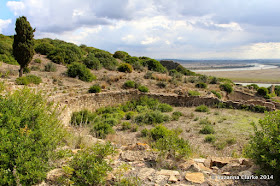On Saturday, Minister of Culture and Communication, Mohamed Laâraj, presided over the official opening ceremony of the Lixus archaeological site interpretation centre, the oldest metropolis in the Kingdom, and one of the oldest urban centres in the world.
 |
| The Lixus archaeological site interpretation centre |
Lixus is an Amazigh (Berber) name that means “golden apples” in Arabic.
According to historical sources, the city of the “golden apples” was built in 1180 B.C. by an Amazigh King of the ancient kingdom of Mauretania. The city experienced major development during the reign of Amazigh King Juba II during the 1st century B.C.
Lixus was settled by the Phoenicians in the 8th or 7th century BC and was later controlled directly from Carthage. It was part of a chain of Punic towns along the Atlantic coast of modern Morocco; other major settlements further to the south are Chellah (called Sala Colonia by the Romans) and Mogador. When Carthage's empire fell to Rome during the Punic Wars, Lixus, Chellah, and Mogador became outposts of the province of Mauretania Tingitana.
 |
| The Roman amphitheatre |
Lixus flourished during the Roman Empire, mainly when the emperor Claudius (AD 41-54) established the province of Africa with full rights for the citizens. Lixus was one of the few Roman cities in Berber Africa that enjoyed an amphitheater. In the third century, Lixus became nearly fully Christian and there are even now the ruins of a Paleochristian church overlooking the archaeological area
The Muslim invasions destroyed the Roman city. Some Berber life was maintained for about a century after the Islamic conquest of North Africa, attested by the presence of a mosque and a house with a patio with walls covered with painted stucco.
SHARE THIS!


No comments:
Post a Comment